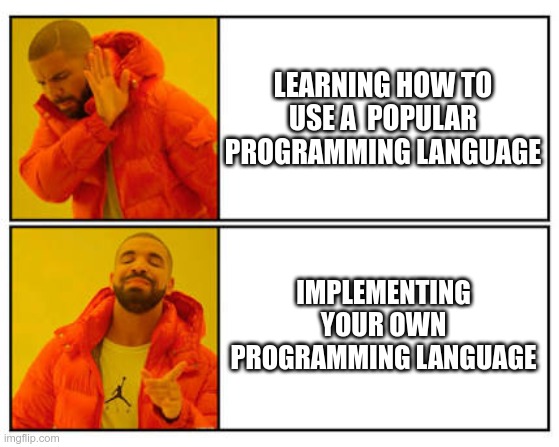Capture The Flags
A (somewhat) gentle introduction
Leonardo Tamiano
On Capture The Flags (CTFs)
Capture The Flags are offline/online events that focus on computer security related topics.

The idea is to have a series of challenges, and the goal of each challenge is to capture a flag.
\[\text{Flag\{Crypt0IsH4rd\}}\]
The flag is protected by various mechanism, and to get it one has to find, research and exploit one or more vulnerabilities.
Each challenge belongs within a specific category.
- binary
- reverse
- web
- crypto
- mobile
- OSINT
Learning through CTFs can be fun and instructive.
\[\textbf{University} \Leftrightarrow \textbf{CTFs} \Leftrightarrow \textbf{Real-World}\]
The Black-Box Technique
Computer Science is complex.
Applied cryptography is very complex.
Q: How do you deal with such overwhelming complexity?
Q: How do you deal with such overwhelming complexity?
Helpful idea:
being able to think in terms of
black boxes
Q: What is a black box?
Q: What is a black box?
A: It is anything that takes an input and produces an output.

Thinking in terms of black boxes allows us to
ignore implementation details!When using black boxes we're only interested in the mapping
\[\text{Input} \longrightarrow \text{Output}\]
This can remove a lot of complexity.
(but be careful cause you're gonna miss some details)
Example of Black Boxing
Example of Black Boxing (1/4)
Consider the following code
def fun(arr, n):
gap = n // 2
while gap > 0:
for i in range(gap, n):
temp = arr[i]
j = i
while (j >= gap and arr[j - gap] > temp):
arr[j] = arr[j - gap]
j -= gap
arr[j] = temp
gap //= 2
(code/black-box.py)
Example of Black Boxing (2/4)
We can analyze the previous code in various ways.
- If we "black box it" we're only interested in the mapping between input and output.
- If we "white box it" we're also interested about its implementation details.
Example of Black Boxing (2/4)
We can test the code as follows
def main():
arr = [3, 5, 2, 1, 0, 2, 3, 1]
n = len(arr)
print(arr)
fun(arr, n)
print(arr)
Example of Black Boxing (3/4)
Executing it, we get
$ python3 black-box.py Before function call [3, 5, 2, 1, 0, 2, 3, 1] After function call [0, 1, 1, 2, 2, 3, 3, 5]
What does the code do?
It sorts an array of integers (shell-sort)!
Interfaces and Implementations
When analyzing real software implementations, it is impossible to understand all the details.
Thinking in terms of black boxes therefore becomes a necessity.
Of course, a black box is simply an abstraction.
A model to help us not go crazy.
A black box is simply an abstraction.
Thus, it is always important to be extremely aware of what exactly is that we are "black boxing" at any given moment.
I suggest to always keep a mental boundary between
- Interface Knowledge (black box)
- Implementation Knowledge (white box)
I also suggest to try to implement things yourself, so as to develop more implementation knowledge.
Implementation
(white box)
def fun(arr, n):
gap = n // 2
while gap > 0:
for i in range(gap, n):
temp = arr[i]
j = i
while (j >= gap and arr[j - gap] > temp):
arr[j] = arr[j - gap]
j -= gap
arr[j] = temp
gap //= 2
Interface
(black box)
\[\begin{split} \text{arr} = \{x_0, &x_1, x_2, \ldots, x_n\} \\ &\downarrow \\ \text{fun}(&\text{arr}, n) \\ &\downarrow \\ \text{arr} = \{x_{i_0}, &x_{i_1}, x_{i_2}, \ldots, x_{i_n}\} \\ i_j \leq i_k &\implies x_{i_j} \leq x_{i_k} \end{split}\]
Confuse interfaces with implementations and sooner or later you will be in much trouble (imho)

The dualism
\[\text{Interface Knowledge}\]
\[\updownarrow\]
\[\text{Implementation Knowledge}\]
applies to all sorts of technologies.
Even cars…

Implementation
(white box)

Interface
(black box)

I suspect it is an intrinsic property of technology.

Of the two, I believe implementation knowledge is much rarer, and, therefore, potentially more valuable.

Python Review
CTFs involve a diverse and heterogeneous set of technologies.
We will restrict your focus on python.
Q: What is Python?
Q: What is Python?
Python is an interpreted programming language that can be used in many different contexts
- Data science
- Cybersecurity
- Web development
- DevOps

Q: Interpreted?
There exists a program, the interpreter, which takes in input python code and which executes each line of the code to produce an effect.
\[\text{Python code} \longrightarrow \text{Python Interpreter} \longrightarrow \text{Effect}\]
\[\text{010101010111010101110101010101}\]
We write code to change bits
\[\text{101010101000101010001010101010}\]
There are various online tutorials on how to install python in your environment.
Basic structure of a python program
#!/usr/bin/env python
def main():
print("Hello World!")
if __name__ == "__main__":
main()
(code/python-review/hello.py)
NOTE: The code is executed from top to bottom.
$ python3 hello.py
Hello World!
I suggest you to (briefly) review the following basic programming construct:
- variables
- functions
- conditionals
- iteration
- basic data structures
- classes
NOTE: No need to be an expert
Variables in Python
#!/usr/bin/env python
if __name__ == "__main__":
boolean = True
integer = 10
floating = 10.5
string = "Hello"
(code/python-review/variables.py)
Functions in Python
#!/usr/bin/env python
def my_sum(a, b):
return a + b
if __name__ == "__main__":
result = my_sum(3, 5)
print(result)
(code/python-review/functions.py)
Conditionals in Python
#!/usr/bin/env python
def absolute_value(a):
if a > 0:
return a
else:
return -a
if __name__ == "__main__":
print(absolute_value(-10))
print(absolute_value(10))
(code/python-review/conditionals.py)
Iterations in Python
#!/usr/bin/env python
def check_prime(n):
for i in range(0, n):
if n % i == 0:
return False
return True
if __name__ == "__main__":
print(check_prime(7))
print(check_prime(10))
(code/python-review/iterations.py)
Basic data structures in Python
#!/usr/bin/env python
if __name__ == "__main__":
my_list = [10, 13, 3, 0, 6]
first_element = my_list[0]
last_element = my_list[4]
length = len(my_list)
my_dictionary = {"a": 0, "b": 0, "c": 0}
value = my_dictionary["a"]
my_dictionary["d"] = 0
my_tuple = (10, 20)
elem = my_tuple[0]
(code/python-review/data-structures.py)
Classes in Python
#!/usr/bin/env python
class Person:
def __init__(self, name, age):
self.name = name
self.age = age
def set_age(self, age):
self.age = age
def get_age(self):
return self.age
if __name__ == "__main__":
p1 = Person("Leonardo", 27)
p2 = Person("Giuseppe", 22)
print(p1.get_age())
(code/python-review/classes.py)
Out First Challenges
Let's start by analyzing some challenges together.
Caesar Cipher
The idea of a Caesar Cipher is to hide the meaning of a message by shifting each letter of the alphabet by a specific constant \(c=3\).
Shift when \(c=3\)
For a single letter
\[\text{A} \longrightarrow \text{A} + 3 = \text{D}\]
Shift when \(c=3\)
For the entire alphabet
\[\begin{split} &\text{ABCDEFGHIJKLMNOPQRSTUVWXYZ} \\ &\qquad \qquad \qquad \qquad \downarrow \\ &\text{DEFGHIJKLMNOPQRSTUVWXYZABC} \\ \end{split}\]
Applying Caesar Cipher
\[\begin{split} &\text{HELLO WORLD} \\ &\;\;\;\;\;\;\;\;\;\;\;\downarrow \\ &\text{KHOOR ZRUOG} \end{split}\]
The Challenge (1/2)
We are given a file chal.txt with the following content
BHWC{ODEBPEJC_EO_JKP_AJKQCD!}
and we need to recover the flag
FLAG{...}
The Challenge (2/2)
We're also given the code that wasa used to generate chal.txt
def main():
shift_value = random.randint(0, 25)
c = Caesar(shift=shift_value)
with open("chal.txt", "w") as f:
encrypted_flag = c.encrypt(FLAG)
f.write(encrypted_flag)
How would you solve it?
Hint: KNOWN-PLAINTEXT ATTACK
KNOWN-PLAINTEXT ATTACK
The plaintext flag starts with \(\text{F}\). We can use this fact to compute the shift used.
\[\text{shift} = \text{ASCII}(c_1) - \text{ASCII}(F) \mod 26\]
Where \(c_1\) is the first letter of the ciphertext
In our case
\[\begin{split} \text{shift} &= \text{ASCII}(c_1) - \text{ASCII}(F) \mod 26 \\ &= \text{ASCII}(B) - \text{ASCII}(F) \mod 26 \\ &= 66 - 70 \mod 26 \\ &= - 4 \mod 26 \\ &= 22 \end{split}\]
Implemented in code
#!/usr/bin/env python3
from caesar import Caesar
def solve():
flag = open("./chal.txt", "r").read()
# extract shift_value with a KNOWN PLAINTEXT ATTACK
shift_value = (ord(flag[0]) - ord('F')) % 26
# decipher the rest
c = Caesar(shift=shift_value)
decrypted_flag = c.decrypt(flag)
print(decrypted_flag)
if __name__ == "__main__":
solve()
$ python3 solution.py
FLAG{SHIFTING_IS_NOT_ENOUGH!}
One-Time Pad
This challenge starts with the following text
Who needs AES when you have XOR?The challenge is made up of two files
- A challenge.py python script
An output.txt file with the following content
Flag: 134af6e1297bc4a96f6a87fe046684e8047084ee046d84c5282dd7ef292dc9
(code/one-time-pad)
The python script contains the following code
#!/usr/bin/python3
import os
flag = open('flag.txt', 'r').read().strip().encode()
class XOR:
def __init__(self):
self.key = os.urandom(4)
def encrypt(self, data):
xored = b''
for i in range(len(data)):
xored += bytes([data[i] ^ self.key[i % len(self.key)]])
return xored
def decrypt(self, data):
return self.encrypt(data)
def main():
global flag
crypto = XOR()
print ('Flag:', crypto.encrypt(flag).hex())
if __name__ == '__main__':
main()
(code/one-time-pad/challenge.py)
We can infer that the output.txt file was encrypted using the XOR
class defined in challenge.py.
In particular, the code implements a one-time-pad.
The idea behind the one-time-pad is to compute the encrypted text by using the XOR operation between the original message bytes and a random key.
\[\text{Plaintext} \mathbin{\oplus} \text{Random key} \longrightarrow \text{Encrypted text}\]
To work properly, the scheme requires that:
- The key must be generated using cryptographically secure pseudo-random bytes.
- The key must be as long as the message.
- For each message, a new key must be generated.
Is this the case?
class XOR:
def __init__(self):
self.key = os.urandom(4)
def encrypt(self, data):
xored = b''
for i in range(len(data)):
xored += bytes([data[i] ^ self.key[i % len(self.key)]])
return xored
def decrypt(self, data):
return self.encrypt(data)
(code/one-time-pad/challenge.py)
The initialization of the key is done using os.urandom(), which
provides with cryptography safe random bytes.
def __init__(self):
self.key = os.urandom(4)
(code/one-time-pad/challenge.py)
Decryption is the same as encryption
def decrypt(self, data):
return self.encrypt(data)
(code/one-time-pad/challenge.py)
Finally, encryption is done by xoring the byte of the message with the byte of the key
def encrypt(self, data):
xored = b''
for i in range(len(data)):
xored += bytes([data[i] ^ self.key[i % len(self.key)]])
return xored
(code/one-time-pad/challenge.py)
What happens when
len(data) > len(self.key)
?
len(data) > len(self.key)
At some point the bytes of the keys are re-used again, even though this shouldn't be possible.
This vulnerability breaks the implementation.
Indeed, we can extract all key bytes by doing, once again, a KNOWN-PLAINTEXT ATTACK
\[\begin{split} K_0 &= C_0 \mathbin{\oplus} \text{ASCII}(F) \\ K_1 &= C_1 \mathbin{\oplus} \text{ASCII}(L) \\ K_2 &= C_2 \mathbin{\oplus} \text{ASCII}(A) \\ K_3 &= C_3 \mathbin{\oplus} \text{ASCII}(G) \\ \end{split}\]
NOTE: This is enough to break the entire ciphertext.
Solution
#!/usr/bin/env python3
def solve():
with open("./output.txt", "r") as f:
output = f.read()
flag = output.split("Flag: ")[1]
encrypted_bytes = bytes.fromhex(flag)
# extract key bytes
key = [0, 0, 0, 0]
key[0] = encrypted_bytes[0] ^ ord('F')
key[1] = encrypted_bytes[1] ^ ord('L')
key[2] = encrypted_bytes[2] ^ ord('A')
key[3] = encrypted_bytes[3] ^ ord('G')
# decrypt flag
plaintext = ["A"] * len(encrypted_bytes)
for i in range(0, len(encrypted_bytes)):
plaintext[i] = chr(encrypted_bytes[i] ^ key[i % 4])
plaintext = "".join(plaintext)
print(plaintext)
(code/one-time-pad/solution.py)
Your Turn
Many-Times Pad
They told me to use it one time. But really, what's the issue here if I use it more than once?
- FILES: https://teaching.leonardotamiano.xyz/university/2023-2024/cns/02/many-times-pad.zip
- IP:
204.216.217.175 - PORT:
4321
We can explore the challenge with nc
$ nc 204.216.217.175 4321 Welcome to Many-times pad. Make a choice: [1] Show flag [2] Encrypt
With option 1 we receive a base64 encoded falg
Flag: 75SMMJiMn3fLPCFP+ubDEAwL1cXgYF7s8XN4Stqg
If we decode it however we see unrecognizable bytes
$ echo "75SMMJiMn3fLPCFP+ubDEAwL1cXgYF7s8XN4Stqg" | base64 -d | hexdump -C ef 94 8c 30 98 8c 9f 77 cb 3c 21 4f fa e6 c3 10 |...0...w.<!O....| 0c 0b d5 c5 e0 60 5e ec f1 73 78 4a da a0 |.....`^..sxJ.. |
NOTE: This means the flag is encrypted!
With option 2 we can send an arbitrary input
Send data to encrypt: HELLOWORLD
However that input has to be base64 encoded before, otherwise we get an error message
[ERROR]: Could not understand data: make sure to base64 your payload!
With proper base64 input instead we get a response back
Send data to encrypt: SEVMTE9XT1JMRAo= Encrypted: g9SGPimPgvOcRIk=
This seems to be the relative encrypted version of our payload.
We can now analyze the source code of the server, server.py
Python Client (1/5)
Finally, we develop the following client application to interact
with the server in the file client.py
#!/usr/bin/env python3
import socket
from base64 import b64decode
from base64 import b64encode
REMOTE_IP = "204.216.217.175"
REMOTE_PORT = 4321
(code/many-times-pad/client.py)
Python Client (2/5)
def solve():
with socket.socket(socket.AF_INET, socket.SOCK_STREAM) as sock:
sock.connect((REMOTE_IP, REMOTE_PORT))
# ignore initial response
sock.recv(len(b'Welcome to Many-times pad.\n\n'))
(code/many-times-pad/client.py)
Python Client (3/5)
Get flag
try:
sock.recv(len(b'Make a choice:\n [1] Show flag\n [2] Encrypt\n\n'))
sock.send(b'1')
s = sock.recv(1024).decode("utf-8")
b64_flag = s.split("Flag: ")[1]
flag_bytes = b64decode(b64_flag)
print(f"Flag_encrypted_bytes = {list(flag_bytes)}")
except Exception as e:
print("Could not read flag")
exit()
(code/many-times-pad/client.py)
Python Client (4/5)
Send text to encrypt
plaintext = b"HELLO"
try:
sock.recv(len(b'Make a choice:\n [1] Show flag\n [2] Encrypt\n\n'))
sock.send(b'2')
sock.recv(len(b'Send data to encrypt:\n'))
print(f"Sending plaintext: {list(plaintext)}")
sock.send(b64encode(plaintext))
s = sock.recv(1024).decode("utf-8")
encrypted_bytes_b64 = s.split("Encrypted: ")[1]
encrypted_bytes = b64decode(encrypted_bytes_b64)
print(f"Received Encrypted: {list(encrypted_bytes)}")
except Exception as e:
print("Could not send plaintext")
exit()
(code/many-times-pad/client.py)
Python Client (5/5)
if __name__ == "__main__":
solve()
(code/many-times-pad/client.py)
When executing the client we get
$ python3 client.py Flag_encrypted_bytes = [81, 113, 165, 138, 136, 158, ...] Sending plaintext: [72, 69, 76, 76, 79] Received Encrypted: [91, 7, 196, 133, 243]
Now its your turn.
Modify the client code, and get the flag!
LCG Lottery
Can you predict the unpredictable?
- FILES: https://teaching.leonardotamiano.xyz/university/2023-2024/cns/02/lcg-lottery.zip
- IP:
204.216.217.175 - PORT:
4444
We can explore the challenge with nc
$ nc 204.216.217.175 4444 Welcome to LCG-Lottery. Make a choice: [1] Draw [2] Guess
With option 1 we receive a number encoded in base64
OTY5Nzk2MDMy
We can decode it as follows
$ echo -e "OTY5Nzk2MDMy" | base64 -d 969796032
With option 2 we can send a number to the server, but we must encode it in base64
NzYyNzY3NjA3 Wrong!
If we analyze the code of the challenge, we see that the server
initializes a PRNG with secret parameters
def challenge(req):
global FLAG, A, B, C
seed = int.from_bytes(os.urandom(32))
prng = LCG(seed, A, B, C)
guessed = 0
The numbers we receive are numbers obtained directly from the PRNG
if opt == "1":
number = prng.next()
data_out = wrap(str(number).encode("utf-8")) + b'\n'
req.sendall(data_out)
To actually read the flag, we need to guess correctly \(3\) numbers in a row.
elif opt == "2":
data_in = req.recv(4096).decode().strip()
try:
guess = unwrap(data_in)
if int(guess) == prng.next():
guessed += 1
if guessed > 3:
data_out = b'Thats it: ' + FLAG + b'\n'
else:
data_out = b'Keep going!\n'
else:
data_out = b'Wrong!\n'
guessed = 0
req.sendall(data_out)
The PRNG used is the Linear Congruential Generator (LCG)
class LCG(object):
def __init__(self, seed, a, b, c):
self.x = seed % c
self.a = a
self.b = b
self.c = c
def next(self):
self.x = (self.x * self.a + self.b) % self.c
return self.x
Now its your turn.
Write the code, and get the flag!